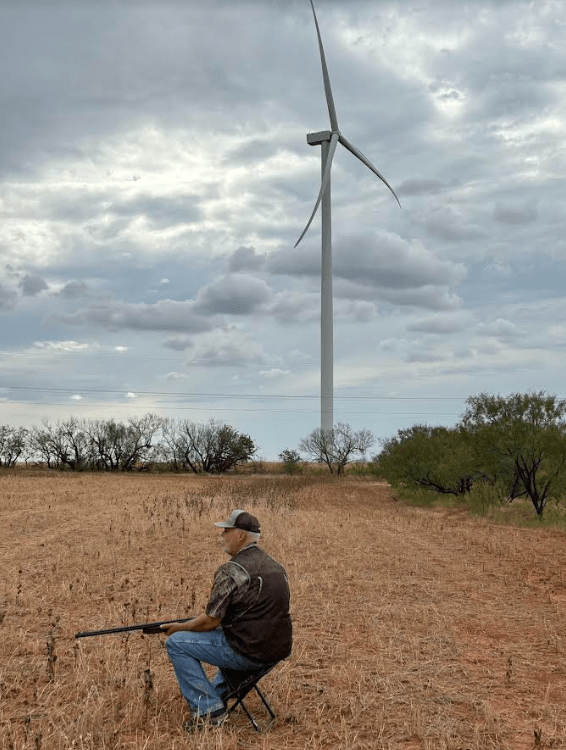The Big Bang: Rains have limited impact on dove opener In North Texas
Published 12:36 am Friday, September 6, 2024

- The landscape has changed for some hunters in Northcentral Texas. Rains caused hunters to adjust, but the dove season still open on a good note. (Steve Knight/Tyler Morning Telegraph)
HAMLIN — With a chance of rain threatening to end the summer drought in Texas’ Big Country, everything was in flux the first two days of dove season in the state’s North Zone.
Outfitter Justin Hill of Ranger Creek Outfitters had prepared to wait until the last minute to assign fields for 300 or so hunters opening day if predicted heavy rains came north of Abilene.
Trending
On paper it was setting up to be one of the best dove seasons in years. After a three-year drop in numbers, the mourning and white-winged populations had rebounded for the second straight year. Hill had been bullish about the season a week early, but added the weather needed to cooperate. For opening morning it did, and the hunting was as predicted.
“It was fantastic. All in all, we took somewhere around 7,000 birds over two days. It was the best since the freeze (2021),” Hill said.
Starting the season Tyler’s Hayes Caldwell and I joined a group of about 30 hunters surrounding a hundred-acre sunflower field in Fisher County. In a luck of the draw, we stopped on the northern end of the field that backed up to a cotton field across the county road.
Almost immediately at legal shooting time the sound of shotguns erupted to the south and west. Those sides of the field backed up to mesquites where the birds apparently roosted the night before.
The shooting was consistent, and in some cases at a fever pitch on those two ends of the field as birds boiled in non-stop. For our end, and hunters to the east, it started slower. Most of our birds came from behind at a high rate of speed backed by a north wind. And when you are shooting poorly as we were, that makes it even tougher.
About an hour after sunrise, the east side of the field picked up with birds coming in flocks of 50 or more, but they headed for the center of the field to feed, then exiting either west or south, but seldom over us.
Trending
Being in the right spot is just part of the dove hunting game. You can move 100 yards one way or another and see a bad hunt go good or a good one go bad. We didn’t finish the morning with limits, and could only hope the rain held off for a second chance in the afternoon.
Fortunately it did, and Hill sent us and a few others into another field between Haskell and Throckmorton that afternoon to finish up. For the most part the field was surrounded on three sides by mesquite-choked pastures. Again, the shooting started instantly for everyone else. It took a couple of moves, and a change of guns, before I finally found the right spot to catch the birds exiting the field and was able to limit out, and not too soon as the rains began to fall.
The chess moves for the outfitter came the next morning after heavier scattered rains moved in.
“The second day was a juggling act. I had to call an audible in a couple of places. I was up at 3 looking at the radar and seeing what fields we could get into,” Hill explained.
It was raining the second morning for about half of our drive from Stamford to Aspermont where we met our guide and other hunters. It was a short drive to the field just outside of town. He had warned us the birds, all mourning doves like the previous day, would be coming in from behind us, circling and then dropping into the field.
The ground was damp from earlier rains, and the clouds made it too dark to even consider shooting before legal sunrise. But when we could see, unlike the morning before it was game on. We might have been the last group in the field to start shooting, but we were possibly the second finished.
While a lot of birds funneled in from behind, they seemed to materialize from everywhere. The best part was they turned and flew just over the 4-foot-tall sunflowers into range. Hunting with a 20-gauge over/under I never missed the need for that third shell. Within 45 minutes I was sitting on my stool, wishing the limit was more than the 15.
Like the previous afternoon, shortly after we left the field the skies opened, and within 24 hours as much as 3 inches had fallen across the area. It was much needed rain for farmers and ranchers, but a cold rain can push birds south. It does not necessarily mean the end of the season, it just means hunters may have to wait for the next wave of birds to move in.
For more information on dove hunts or waterfowl hunts, contact Hill at 325-260-8626 or email Justin@rangercreekgoose.com.






